I’ve joked a lot over the years about how Magic Loop and I do not get along. There’s a good reason for that.
I’d tried it several times, and every time, I wound up in a tangled mess. My last try, about eight years ago, was such a miserable failure that I actually chucked my yarn in a box and didn’t touch it for a while.
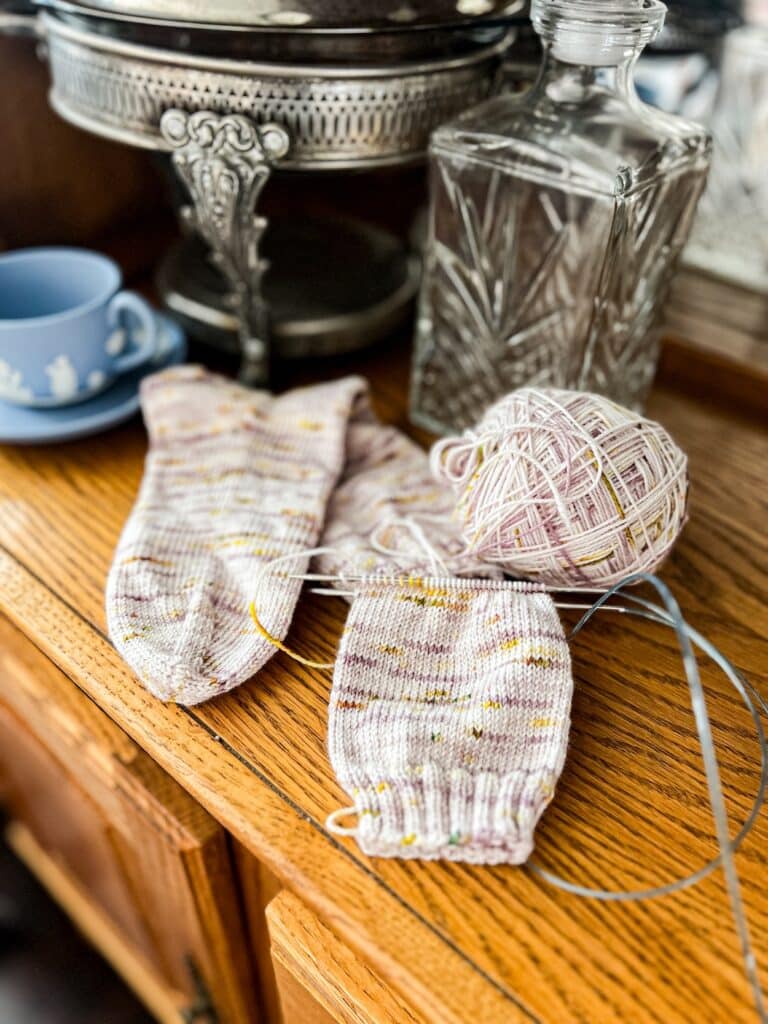
Recently, though, I decided enough was enough. I was going to learn Magic Loop, and I was going to document the process.
Why I Wanted to Learn Magic Loop
I got several comments from people saying I should just skip Magic Loop and try some other method instead. While I understand that impulse, there were two reasons I wanted to get this particular method down.
First, and most important, is that I needed it as a professional skill. When I get questions from Magic Loopers about my sock patterns, I want to be able to understand where they might be running into trouble. I could theoretically do that already, but it’s so much better when I have practical knowledge and personal experience.
The second reason is that, frankly, I am a stubborn cuss, and I hated knowing there was a knitting skill out there that had bested me. That situation, frankly, is intolerable. I don’t mind when there’s a skill I simply haven’t tried, but a skill that I tried and couldn’t master? No sir.
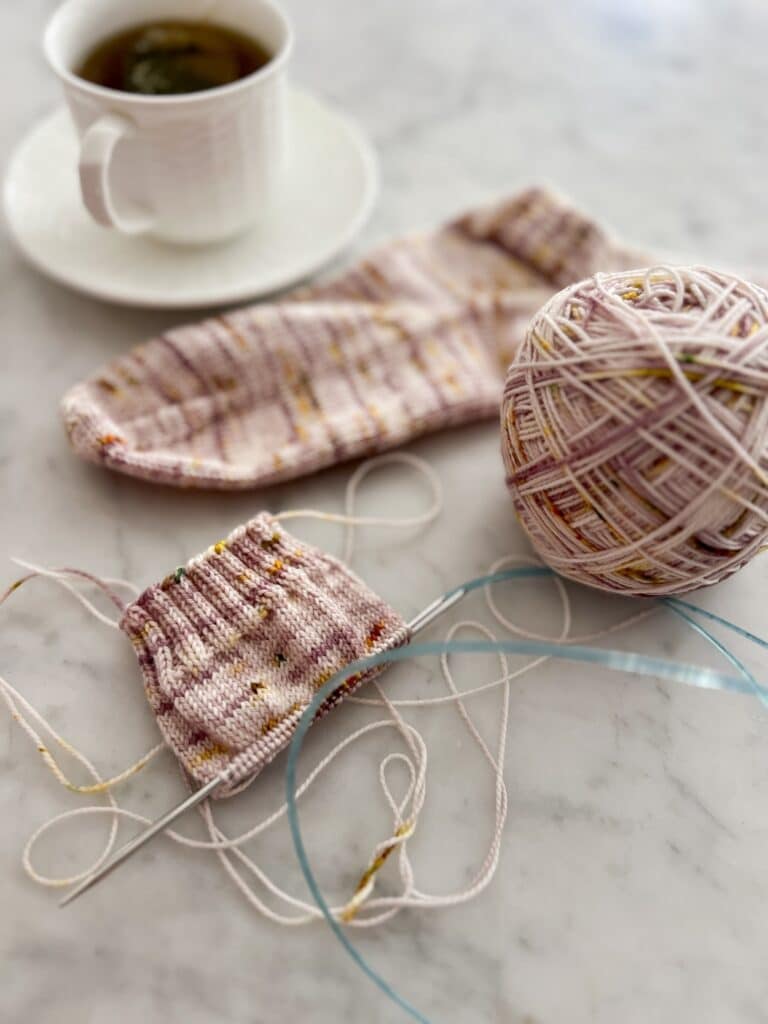
How Things Went
After a lot of hemming and hawing, I decided to just go for it. I went to YouTube and looked up some info from the always-trusty Very Pink Knits (that’s a link to the tutorial I followed). I’ll confess, I was still kind of confused at first.
You can see my facial expressions here because I thought it would be funny to record myself trying to figure this out:
@abeeinthebonnet Replying to @Novel-Tea Knits 🤍 Look what I managed to figure out!! I’m so proud of myself I could burst. #knitting #handknitsocks #knittersoftiktok #yarnlovers ♬ original sound – Lauren | Knitting patterns
But eventually I said to myself, “Okay, Lauren. You can do this. You are a smart, competent adult. Let’s go.”
So I did. I cast on, pulled the cord through at about the midpoint of the stitches, positioned my needles the way Staci had showed me, and just… went for it.
And you know what? For whatever reason, this time, it clicked. It was fiddly at first, and the first couple stitches were weirdly stretched out (I fixed that when I wove in my ends). The cords felt weird against my hands and kept getting in my way. I got tangled up in the yarn when flipping and tugging things around.
Eventually, though, I settled into a rhythm. I figured out which side to tug first, how to hold my yarn while flipping my work, and how far to pull out my working needle. It became comfortable. I even, dare I say it, enjoyed myself.
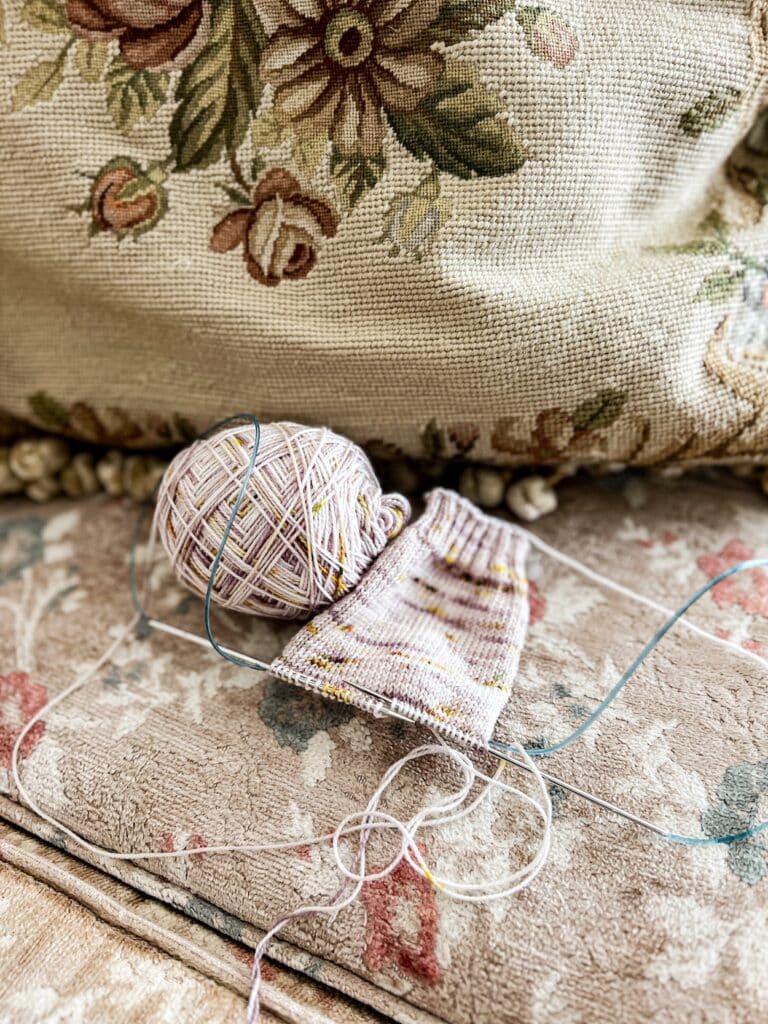
Magic Loop and The Future
While I have found this learning experience surprisingly fun, I think Magic Loop will probably be a secondary method for me, and I’ll mostly stick with my small circulars for most of my knitting needs. There are a few reasons for that.
First, the small circular is still more comfortable for me. I’ve found that Magic Loop, with its added flipping and tugging, causes me a bit of elbow and forearm pain after a while. That hasn’t ever really been an issue with my small circular needles.
Second, the small circular is more compact. The longer needle tips and the long cable from the Magic Loop mean it’s a little more of an issue to take my sock knitting out and about with me. I can’t just dump it into my bag because the cable is more likely to get snagged on something, so I need to make sure I have a project bag available.
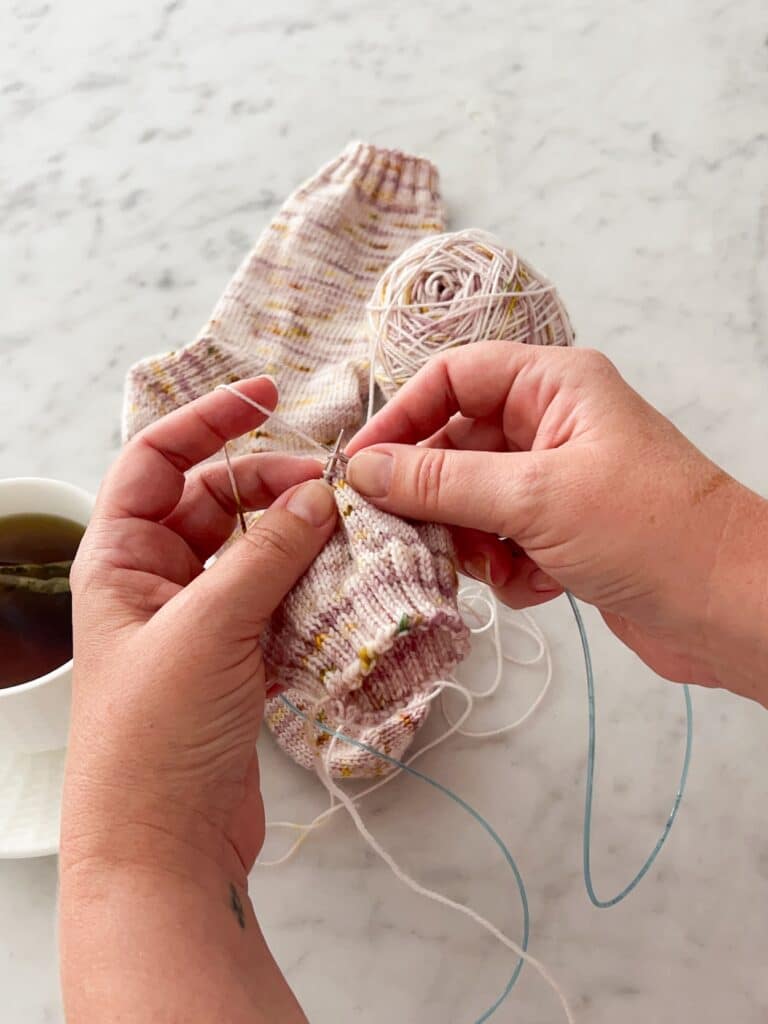
And finally, the small circular needle is still faster for me. While speed isn’t always the goal, it does help me a lot when I’m on a design deadline. Because I have to maintain a fairly brisk publishing schedule and I knit all my own samples, a faster sock knitting method is generally good for my needs.
But I am definitely still planning to try knitting two-at-a-time socks. You know, just for the experience.
Let’s stay connected!
Join my newsletter for 30% off all new releases, regular updates with helpful tips and tricks, first crack at registration for upcoming workshops, exclusive discounts, and more.
Prefer to read without ads? Join my Patreon, which starts at just $1 a month!
Join the A Bee In The Bonnet Facebook Group to participate in knitalongs and other fun community events
Come hang out with me on the A Bee In The Bonnet TikTok
Follow along on the A Bee In The Bonnet Instagram
Get inspired via the A Bee In The Bonnet Pinterest

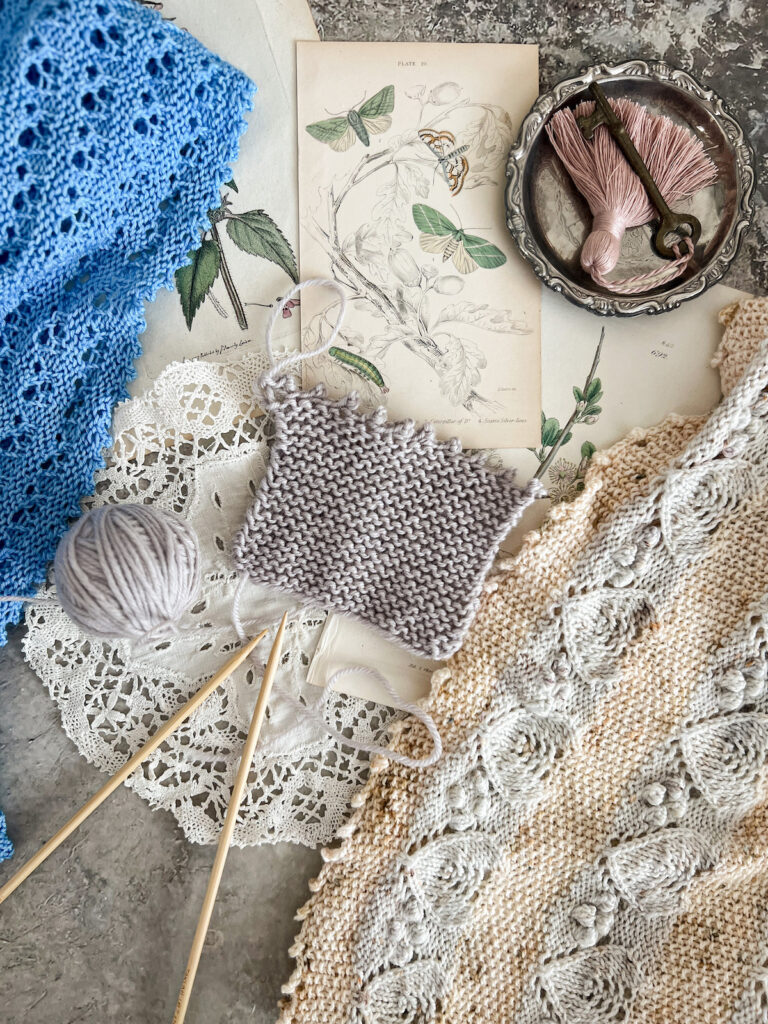

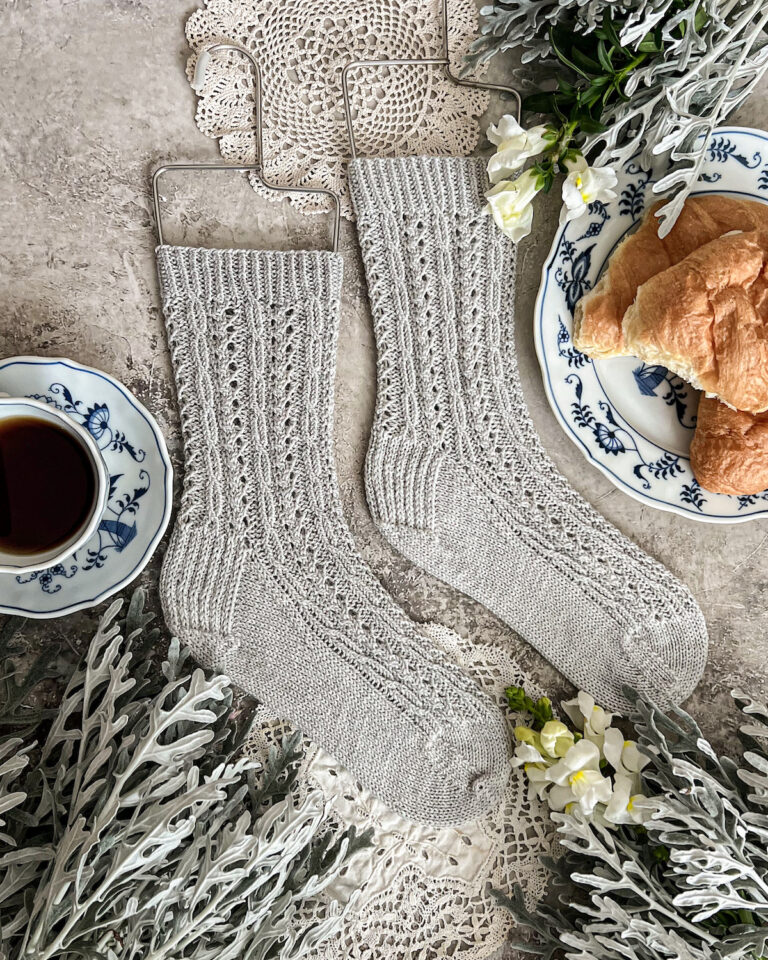
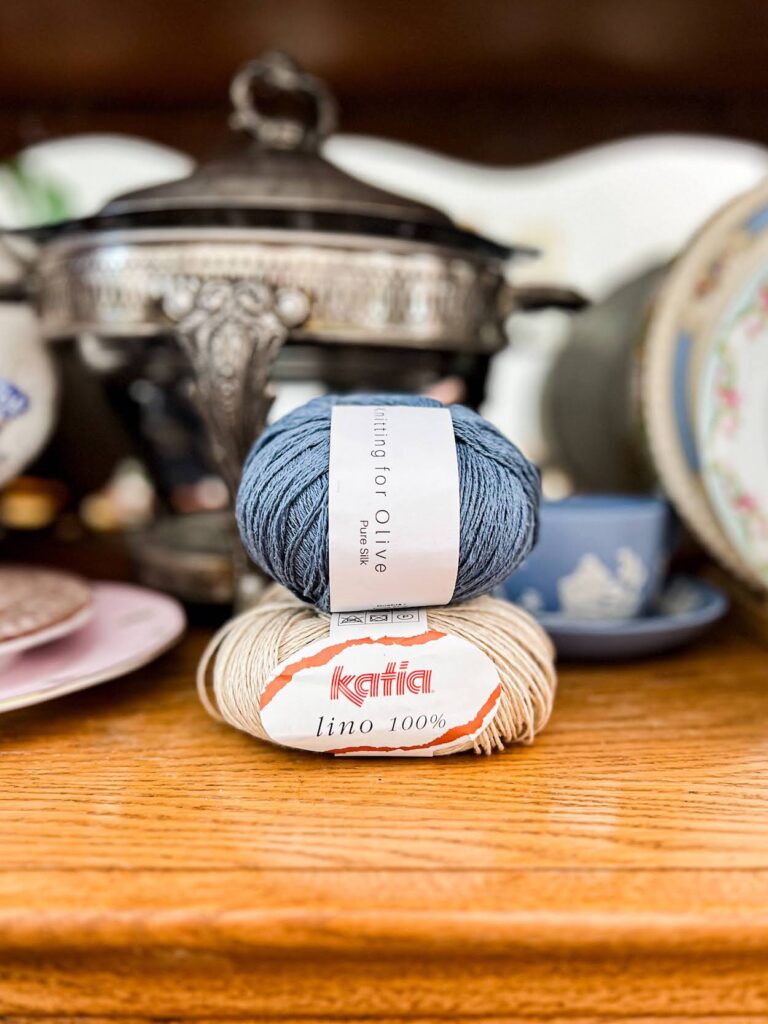

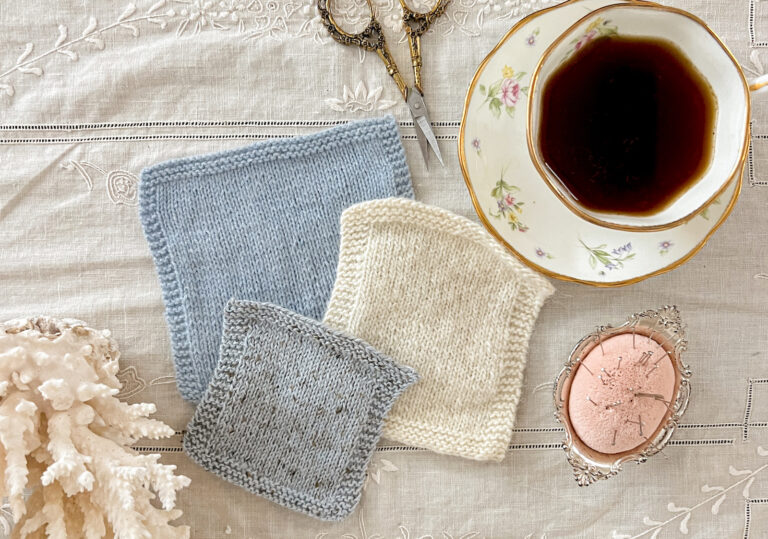
Woo hoo! Kudos to you! I do a combination of small circular and magic loop. Your past experience with magic loop is my experience with double points.
Usually I work the beginning of the sock with the small circular needles. When I begin the heel flap, I switch over to magic loop. At the end of the gusset, I switch back to small circular and back to magic loop for the toe. Whatever works, right?!
That’s so interesting! I do DPNs for the heels and toes when I’m using small circs, but I’ve found (at least for now) the heel flap and gusset are oddly comfortable with Magic Loop. I love seeing how different brains handle the same challenges in different ways.
When I began knitting, the only needles I knew of for socks were DPNs. Years went by before I found circular needles and EZ at the same time. When I started to teach, I learned all the techniques I could, including Magic Loop. I find it annoyingly cumbersome and slow, only using it when I lack the correct size in circular or DPNs. For instance, I am using Magic Loop for the sleeves on my current WIP, a top down cardigan by Joji Locatelli.
A recent discovery are the bendy flip needles that are among my new favorites.
Knitters have an explosion of options thanks to becoming a truly international community sharing innovations so generously.
I loathe the magic loop!
Give me DPN’S any day.
I can’t manage the short circulars.🤷♀️
Congratulations! I am so glad your conquered this method. It’s also great that you can use small circulars, but they hurt my hands. I have stuck with my tried and true 2 circular needles (2AAT). I look forward to hearing your thoughts on 2AAT on magic loop. And then perhaps I will be as brave as you and try magic loop. Thank you for sharing your experience.